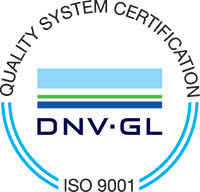Mechanical polishing covers grinding, buffing, and polishing - all processes for improving the surface conditions of a product for decorative or functional purposes. The various techniques are abrading operations although some plastic working of the surfaces may occur, particularly during buffing.
The Mechanical Polishing Process
The process is to do grinding first, polishing second, and buffing third. In general, grinding permits far more aggressive abrading action than polishing. Likewise, polishing is a far more aggressive abrading action than buffing.
In grinding, polishing and buffing, labor is a major variable in the process. The requirement if for highly skilled labor with years of experience and a thorough knowledge of the art of their craft.
The basic mill plate and sheet metal finishes for stainless steel include five grades that have finishes that are produced mechanically by using abrasive compositions and buffing wheels. There is also available on the market what is generically known as 'non-directional No. 8."
Special mechanical polishing procedures are required for preparing metal surfaces, such as stainless steel, for electropolishing. Please look at the comparison table and compare the various polished mill finishes against, the abrasive grit number used to produce them, and the surface roughness readings before and after electropolishing.
Polishing Mills Comparison Table
| Mill No. | Grit No. | Before Electropolishing Surface Roughness, Ra | After Electropolishing* Surface Roughness, Ra | ||
|---|---|---|---|---|---|
| micrometer | microinches | micrometer | microinches | ||
| 3 | 60 | 3.56 max | 140 max | 1.78-2.25 | 70-90 |
| 4 | 120 | 1.14 max | 45 max | 0.57-0.75 | 23-30 |
| 4 | 180 | 0.64 max | 25 max | 0.32-0.40 | 13-16 |
| 7 | 240 | 0.20-0.51 | 8-20 | 0.10-0.26 | 4-10 |
| 8 | 320 | 0.15-0.38 | 6-15 | 0.08-0.19 | 3-8 |
| 8 | 500 | 0.10-0.25 | 4-10 | 0.05-0.13 | 2-5 |
| * Values are Approximate. Electropolishing generally reduces surface roughness readings of a non-electropolished surface by 50 percent. | |||||
Basic Mill Plate Finishes for Stainless Steel
Mechanical Stainless Steel Polishing
Polishing is an intermediate step used to improve the surface finish from the grinding step, such as found on a common household stainless steel sink - lustrous, but not mirror-like. Polishing uses abrasives firmly attached to a flexible backing, such as a wheel, belt or orbital motion tool.
Mechanical stainless steel polishing is an abrading operation used to remove or smooth grinding lines, scratches, pits, mold marks, parting lines, tool marks, stretcher strains, and surface defects that adversely affect the appearance or function of the part. The process causes some plastic working of the surface as metal is removed. A mechanically polished surface yields an abundance of scratches, strains, metal debris and embedded abrasives, and always distorts the metal surface. Burnishing metal by lapping or buffing decreases the micro-inch roughness and improves the image-defining quality of a surface, but it never completely removes the debris and damage metal caused by mechanical polishing. Delstar's stainless steel mechanical polishing process is available on all grades of stainless including 316 and 304.
Learn more about the differences between the electropolishing process and the mechanical polishing process.
 Delstar
Delstar
